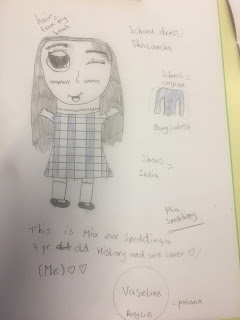The Journey of Cotton to Carlisle's Cotton Mills - The Trade Triangle - 1st May, 2019
 |
| raw cotton |
We learned that Whitehaven, once a small fishing port, had been developed by the Lowther family into busy shipping port, exporting coal from the Lowther's mines to Ireland. During the 1700s Whitehaven became a major trading port, its tobacco trade being only second to London.
 | |||||
| Whitehaven Harbour 1700 |
This showed that ships sailed from Britain loaded with textiles, firearms, weapons, gunpowder and metal goods to trade with dealers in West African countries.
The second leg - the middle passage - saw West Africans, who had been kidnapped, sold and packed into the ships for an eight week journey to the Caribbean and North America to work in the tobacco and cotton plantations. This is known as the slave trade.
The men, women and children involved had been taken against their will, cruelly treated and many did not survive the journey. Those that did were put to work for nothing on the plantations.
Whitehaven's involvement in slave ships amounted to 1 - 2% of those sailing from Britain - 69 slave ships sailed from Whitehaven between 1710 - 1769. Ships for this purpose were built at Whitehaven during this time. In comparison 1250 sailed from Liverpool during this period. This continued until 1807 when an Act was passed in Parliament for the abolition of slavery.
(more information on our local involvement can be obtained at the Beacon Museum, Whitehaven and The Rum Story, Whitehaven).
The third leg of the trade triangle involved ships returning to Europe laden with rum (The Rum Story), molasses, tobacco, coffee and raw cotton.
We then discussed trade - what this is and what it means to us today in a global trading world. More than ever before we need to consider as individuals how we live impacts on others and our planet. Mr Garrat's class that morning had been learning about the commercial destruction of our rainforests and its damaging effects.
We focused on one organisation, Fairtrade and watched their video - Tipping the Balance - using the example of one product, the banana.
https://www.youtube.com/watch?v=B45_I1TUlSs
It was a good chance to look at the symbolism within their logo - sky, land, figure with raised arm, fish and a parrot! We shall be featuring symbolism in a later session when designing for our banners.
For our activity, using our facial drawing skills learned last session - in our sketchbooks, we drew a picture of ourselves.
We then discussed and thought about what we eat, what we wear, what we use - where was it made? Where does it come from? How was it transported here?
We had lots of great examples, here are a few....
We were surprised to learn that our school uniforms came from all over the world! Many we found out were made from cotton.
School jumpers from Pakistan
Cardigans from China, Myamar (Burma) and Bangladesh
Dresses from Sri Lanka
Skirts from Vietnam and Sri Lanka
Shoes from Cambodia, China and one pair from the UK
Some designed logos.......with important messages..
Well done everyone. Certainly food for thought.
In a later session, we shall be covering the journey of the raw cotton from Whitehaven to Carlisle's mills.
















Comments
Post a Comment